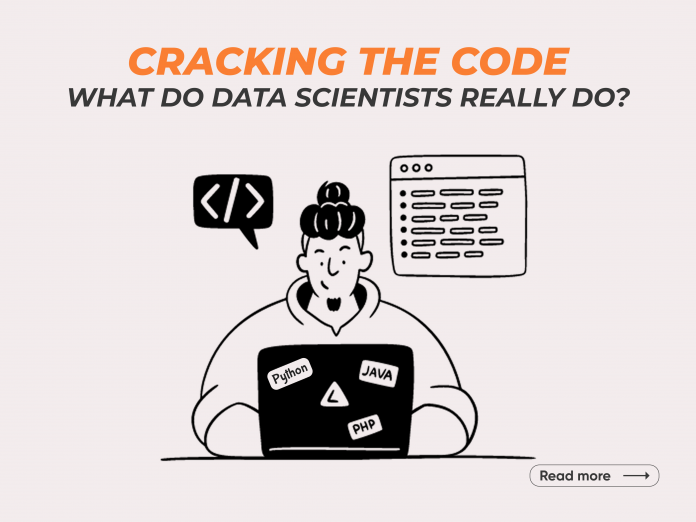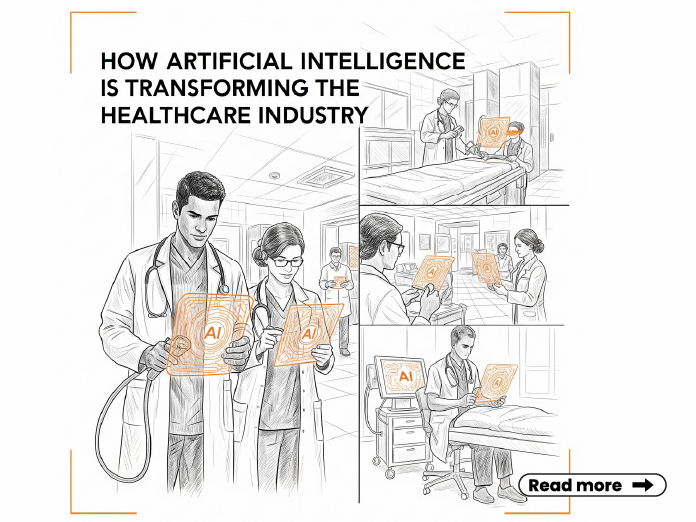What is a Data Scientist? In today’s digital era, data has become one of the most valuable assets for organizations across various industries. However, raw data alone is not useful unless it is processed, analyzed, and transformed into meaningful insights. This is where data scientists play a pivotal role.
A data scientist is a professional who specializes in analyzing complex data sets, applying statistical and machine learning techniques, and developing predictive models to drive data-driven decision-making. With the continuous advancement of artificial intelligence (AI), automation, and big data technologies, the demand for data scientists has surged across industries such as healthcare, finance, retail, and technology.
This blog explores what is data science, the role of a data scientist, what does a data scientist do, their core responsibilities, essential skills, industries that depend on them, and the future of data science.
Who is a Data Scientist?
A data scientist is an expert who combines knowledge of statistics, mathematics, B.tech computer science, and domain-specific expertise to extract insights from large and complex data sets. They use machine learning algorithms, artificial intelligence, and data analytics tools to identify trends, develop forecasts, and automate decision-making processes.
Unlike data analysts who focus primarily on reporting and descriptive statistics, data scientists go a step further by designing machine learning models and implementing advanced data processing techniques to solve complex business problems.
Key Responsibilities of a Data Scientist
The role of a data scientist encompasses various tasks, from data acquisition to model deployment. Here are some of their primary responsibilities:
- Data Collection and Preparation
Data scientists gather data from diverse sources, including databases, APIs, IoT devices, and social media platforms. Since raw data often contains errors, inconsistencies, or missing values, they apply preprocessing techniques to clean and standardize the data for analysis.
Key preprocessing tasks include Data Scientist:
- Handling missing data using imputation techniques.
- Removing duplicate and inconsistent records.
- Normalizing and transforming data for uniformity.
- Exploratory Data Analysis (EDA)
EDA is a crucial step where data scientists analyze and visualize data to uncover patterns, correlations, and anomalies. It provides a deeper understanding of the dataset before applying machine learning models.
Techniques used in EDA include:
- Descriptive statistics (mean, median, standard deviation, etc.).
- Data visualization using histograms, scatter plots, and box plots.
- Identifying relationships between variables to select relevant features.
- Developing and Training Machine Learning Models
One of the core responsibilities of a data scientist is to build and train predictive models to enhance decision-making. This involves:
- Selecting the appropriate machine learning algorithms (e.g., decision trees, support vector machines, neural networks).
- Splitting data into training and testing sets for validation.
- Optimizing model performance through hyperparameter tuning.
- Applying deep learning techniques for complex AI applications such as image recognition and natural language processing.
- Data Visualization and Communication
Data scientists must communicate their findings effectively to non-technical stakeholders, such as business executives and decision-makers. They use visualization tools to present insights in an easy-to-understand manner.
Common data visualization tools include:
- Tableau & Power BI – Business intelligence dashboards for real-time analytics.
- Matplotlib & Seaborn – Python libraries for generating statistical visualizations.
- D3.js – JavaScript-based visualization for web applications.
- Business Strategy and Decision Support
Data scientists collaborate with business teams to define challenges and offer data-driven solutions. Their insights help optimize marketing strategies, improve customer experience, detect fraudulent activities, and enhance operational efficiency.
- AI Implementation and Automation
With the rise of AI-driven solutions, data scientists work on automating repetitive processes using artificial intelligence. Examples include:
- Developing chatbots for customer support automation.
- Creating recommendation systems (e.g., personalized shopping suggestions on e-commerce platforms).
- Enhancing fraud detection systems for financial security.
- Continuous Learning and Innovation
Since data science is a rapidly evolving field, professionals must stay updated with new methodologies, programming languages, and emerging AI trends.
Essential Skills for a Data Scientist
To succeed as a data scientist, one must possess a combination of technical and soft skills:
Technical Skills
- Programming: Proficiency in Python, R, and SQL for data manipulation and model building.
- Mathematics and Statistics: Understanding probability, regression analysis, and hypothesis testing.
- Machine Learning & AI: Knowledge of supervised and unsupervised learning techniques.
- Big Data Technologies: Familiarity with Hadoop, Spark, and cloud-based platforms.
- Data Visualization: Ability to create clear, informative dashboards and reports.
Soft Skills
- Problem-Solving: Analytical thinking to extract meaningful insights from data.
- Communication: Ability to explain technical concepts in simple terms.
- Critical Thinking: Ensuring unbiased and ethical decision-making.
- Collaboration: Working effectively with teams from various departments.
Industries That Rely on Data Scientists
- Healthcare
- AI-powered diagnostics and disease prediction models.
- Personalized medicine and patient treatment plans.
- Finance
- Fraud detection and risk assessment models.
- Algorithmic trading and investment strategies.
- Retail and E-Commerce
- Customer segmentation and targeted marketing.
- Supply chain optimization and inventory forecasting.
- Technology and Cybersecurity
- AI-driven threat detection and risk management.
- Real-time monitoring for cybersecurity threats.
- Marketing and Advertising
- Audience sentiment analysis and trend forecasting.
- Automated campaign optimization using data analytics.
Future Trends in Data Science
- AI-Powered Automation
Businesses are increasingly integrating AI to streamline workflows and automate decision-making processes.
- Real-Time Analytics
Industries such as finance and cybersecurity are leveraging real-time data processing for instant decision-making and risk mitigation.
- Ethical AI and Data Privacy
As AI adoption grows, organizations are focusing on responsible AI practices, data governance, and transparency in machine learning models.
- Augmented Analytics
The integration of AI with analytics tools will enable non-technical users to derive actionable insights effortlessly.
- Quantum Computing in Data Science
Quantum computing is set to revolutionize machine learning by exponentially increasing processing speed and handling large-scale data analysis more efficiently.
Conclusion
The role of a data scientist is more important than ever, as organizations seek data-driven strategies to enhance operations and drive innovation. By leveraging statistics, machine learning, and AI-powered tools, data scientists enable businesses to make informed decisions, optimize resources, and improve overall efficiency.
As industries continue to generate vast amounts of data, the demand for skilled data scientists will continue to grow. Whether you are a student exploring career opportunities or a professional looking to upskill, acquiring expertise in data science can open doors to exciting and rewarding job prospects. Staying up to date with emerging trends in AI and big data will be crucial for success in this dynamic field.














